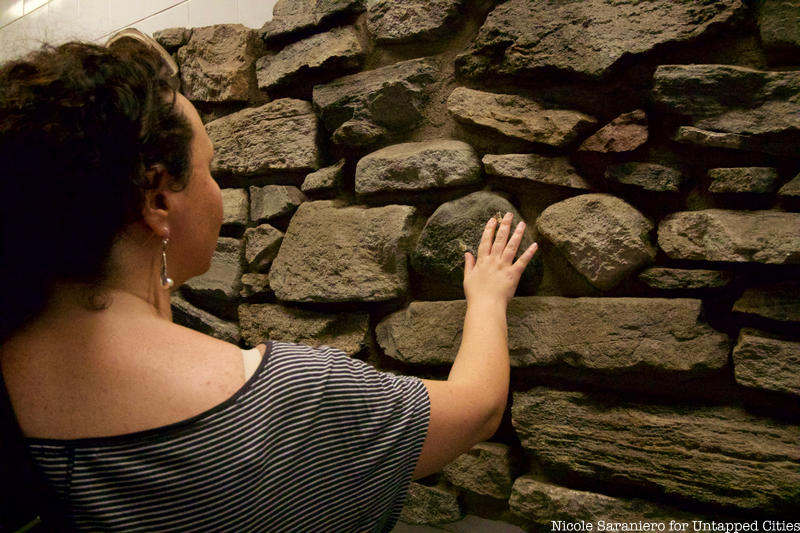
You may expect remnants of New York City’s colonial history to be hard to find or cordoned off behind barriers and glass, but there are many vestiges of the past integrated into today’s modern cityscape. Most are easily accessible on a walk through Lower Manhattan. While some remnants are visible but out of arm’s reach like the 17th-century remains of the Lovelace Tavern, there are pieces of the city’s colonial history that you can literally reach out and touch! Hidden in bars, embedded in the walls of a subway station, and simply out in the open air, here are 10 physical remnants of colonial Manhattan you can touch:
1. 18th Century Stone Wall

It is well known that the New York City subway system is full of fun and interesting art pieces, but inside the South Ferry Station, 1, R, N, W, and 2 train riders will find something very unique, the remnants of an 18th century stone wall. This chunk of stone was one of four wall fragments discovered below the eastern part of Battery Park in December 2005 by the Museum of the City of New York’s archaeological team. As the team was conducting excavations for the South Ferry Station, they came upon one of the oldest man-made structures still in place in Manhattan, the Battery Wall.
To learn more about the Battery Wall, feel it for yourself and visit other sites on this list, join Untapped Cities for an upcoming Remnants of New Amsterdam Tour!
The wall was built around 1755 at the southwestern tip of Manhattan to shield the colony, then under British rule, from enemies as well as rough waves and wind. The wall was buried under a landfill in the late 18th century and further buried by Battery Park in the 19th century. Today, you can walk right up to the wall and touch it. You can even see fossilized oyster shells embedded in the stones.






